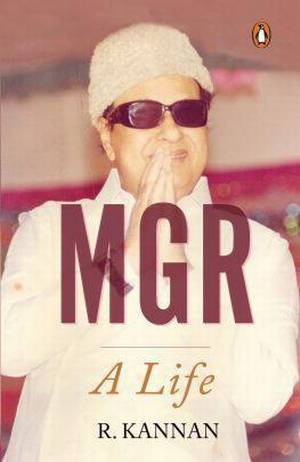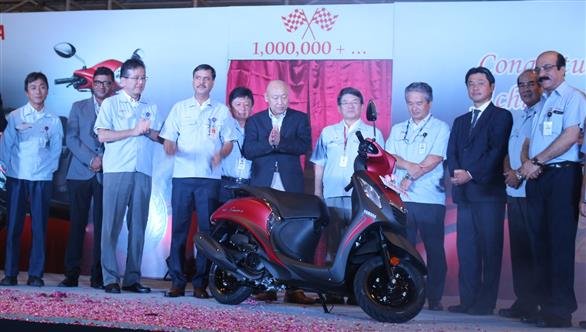29
New jasmine variety promises blooms, profit in dry months
The state boasts of being one of the major cultivators of jasmine in the country . Yet, with jasmine being a seasonal shrub, its cultivation is limited between March and September, leaving farmers unemployed during the off-season. Not anymore.
Floriculturists at Tamil Nadu Agricultural University (TNAU) are now working on developing a variety of jasmine that grows all year round. Called the improved CO2 variety of `pitchi’ -one that is popular for hair accessorising – it promises to produce flowers throughout the year.
Though the yield of the variety is expected to be around 30% lesser than the older varieties of pitchi jasmine, it will give the farmers extremely high returns during the off season or winter.
The older varieties of pitchi jasmine cultivated during the flowering season (between March and September-end) give farmers an annual yield of around 10 tonnes per hectare.
“However, the price of jasmine during the season is only Rs150 per kg. They almost have no income during the off-season, ” says professor and head of the floriculture department, M Kannai.
“But, there were a few farmers who harvest their flowers during the off season too, because it yields a much better price. That is what gave us the idea to come up with a clone of a variety that grows all year round, ” he adds.
The new variety called `improved CO2′ is expected to produce a uniform yield throughout the year. “The variety will give an overall yield of 7 tonnes per hectare, which is 30% lesser than the yield given by CO1 and CO2,” says Kannan.
“But the advantage is that farmers will be able to rake in at least `700 to `800 per kg for even loose flowers during the off season between October and February. Thus, the returns for farmers will be higher with the new variety than the older CO1 and CO2 varieties, ” he adds.
The variety is also resistant to major diseases and pests that affect the jasmine plant. “The buds of the new variety are an intensive pink, com pared to the usual light pink, but once the flower blooms, it assumes a neat white colour, ” says Kannan.
The only disadvantage of the variety is that, with a shelf life of hardly 24 hours, the pitchi jasmine is unlikely to be chosen for ex ports. The Gundu Malli which stays fresh for around 48 hours when refrigerated is instead preferred for exports.
Multi-locational trials of the variety have been under progress for the past six months, say department staff. ” We have been conducting trials with the new variety in farmer’s fields, shrubs for which were planted in March.Some of them have started bearing flowers too, ” says Kannan. The department has also distributed plants of the new clone to around 25 jasmine farmers in 10 jasmine growing districts including Madurai, Dindigul, Erode, Krishnagiri, Villupuram, Thiruvannamalai and Coimbatore.
source: http://www.timesofindia.indiatimes.com / The Times of India / News> City News> Madurai News / by Pratiksha Ramkumari / TNN / September 26th, 2017
27
26
25
24
Yamaha India rolls out 1 Millionth two-wheeler from Chennai factory
India Yamaha Motor (IYM) Pvt Ltd on Friday achieved a milestone by rolling out the one-millionth two-wheeler to be produced at its Chennai, Tamil Nadu factory in two-and-a-half years of operations. The millionth two-wheeler to be produced at the Yamaha premises is a unit of the Yamaha Fascino. India Yamaha Motor has reached this figure on the back of good sales of its two-wheelers including the Ray Z, Ray ZR and Alpha scooters, and the Saluto and Saluto RX motorcycles. Yamaha had begun operations at the Chennai facility in March 2015 with an initial production capacity of 4.5 lakh units per year, ramping it up to 6 lakh units this year. India Yamaha Motor now aims to produce 9 lakh units per annum by 2019 at the Chennai factory and 7 lakh units at its facility in Surajpur, Chattisgarh, taking total production to 1.6 million units in two years. Yamaha recently launched the Fazer 25 faired version or its FZ25 250cc motorcycle. To boost sales, Yamaha has also been launching scooter boutiques in select cities of the country.
IYM deputy MD Riuji Kawashima said that the company would continue to enhance the production facilities in India to better serve the Indian market. Yamaha has so far invested Rs 1,300 crore in the Chennai Factory and plans to invest more than Rs 200 crore by 2018. Out of one million products manufactured from the Chennai Factory, 8.5 lakh units have been manufactured for the domestic market and remaining 1.5 lacs units for the export market including African market as well as ASEAN and Latin American markets. Yamaha Fascino is the most produced model with 3.7 lakh units. The production percentage ratio of the scooter & motorcycle production at the factory is 7:3 right now. The models with highest export numbers were the FZ series, Ray ZR, and Fascino.
source: http://www.overdrive.in / OverDrive / Home> News / Team OD / September 22nd, 2017
Art director GK dies in Chennai aged 60

Chennai :
Veteran film art director Gopi Kanth, better known as GK, died in Chennai in the early hours of Thursday due to a heart ailment. He was 60.
G K was admitted to Apollo Hospitals on the Greams Road on Saturday. He breathed his last in the hospital around 12.30am.
G K is survived by wife Nagavalli, a son and a daughter.
G K had worked with stars like Raninikanth, Kamal Haasan and Vijay in films such as ‘Baba,’ ‘Arunachalam,’ ‘Avvai Shanmugi,’ ‘Thiruppachi’ and ‘Sivakasi’.
The body was brought to his home at Valasaravakkam here (No 16, 2nd Street, Anbu Nagar, Sridevi Garden, Valasaravakkam.)
source: http://www.timesofindia.indiatimes.com / The Times of India / News> City News> Chennai News / by Abdullah Nurullah / TNN / September 21st, 2017
The man behind the legend: review of ‘MGR: A Life’

In his centenary year, a perceptive biography presents MGR with all his achievements and faltering, his personality and politics
M.G. Ramachandran never ceases to fascinate. In the 30 years since his death, there are signs to show that his popularity in Tamil Nadu has not declined. If a digitised version of one of his movies from the 1960s is released, it still runs to packed houses. It is his centenary year, and the same veneration that he commanded among his followers seems to prevail even among a generation that could not have seen him in his heyday.
R. Kannan’s informative biography brings out the major reasons for the MGR phenomenon: an everlasting reputation for charity, the trust he inspired in the masses that he stood for their welfare, and his carefully cultivated image as a do-gooder. What makes this a perceptive account is that it rarely descends to hagiography, and touches, albeit in a nuanced way, the man’s undoubted shortcomings.
Early episodes in MGR’s life accounts are revealing. Much of this part is perhaps drawn from MGR’s own memoirs and from contemporary accounts, but what Kannan offers is the first cogent narrative of MGR’s early years, the debilitating poverty in which he grew up, the role of his mother and brother in shaping his outlook in life. The portrayal of Ramachandran’s poverty-stricken life as a child theatre artiste makes for a moving read. Too poor to go to school, he and his brother lived through ordeals and torments in a theatre company as they had no other means of livelihood. MGR had early exposure to both the survival throes and the petty jealousies of an incipient theatre and cinema career. These experiences informed his welfare-centric policies several decades later as chief minister.
Tinsel world stories
Many pages are devoted to MGR’s experiences in the tinsel world, understandably so, as this was the medium that was used to project his image. Initially used by the Dravida Munnetra Kazhagam to draw crowds, he was somehow catapulted into the political limelight due to various factors. His mentors in theatre and politics were not his only influences. Even those who saw him as a threat and still others who underestimated his rise in the party, were also indirect motivators for his aspirations.
Almost all of MGR’s film songs were written with an eye on his emerging political career. Even though this is well known, the author’s engaging account — as well as free-wheeling translations — of the various songs that made him a hero, a revolutionary, a friend of the masses, a philanthropist, a teetotaller and the scourge of evil, helps in understanding the direction in which he was heading in politics.
There is a lot about his career in cinema, but somehow, there seem to be too many details about how he signed up particular films and how he landed a certain role. There is not enough about many other aspects of his film career, including his directorial ventures and his insight into various trades in the industry. Given the build-up in the biography about his career trajectory, the account of his three successive stints as chief minister can be seen as sketchy. As this part is narrated mainly through public events and major political developments, the reader does not get a full insight into the functioning of MGR as an administrator. At the same time, the author does convey the essentials. One gets a sense of how MGR did not believe in the core Dravidian principle of rationalism and opposition to religion, of how he lived in perpetual fear of the Centre and how tax investigations influenced his political decisions.
Chief minister’s diary
As chief minister for 10 years, he relied on intuition and the unique connect he had with the masses in making major announcements. Of course, there were blunders and long phases of inactivity, economic and administrative stagnation and political uncertainty because of his bouts of illnesses. The transition from a person who managed to run a relatively clean government to one who allowed corruption to acquire huge proportions has been captured. The extent to which the liquor trade and the privatisation of engineering and medical education contributed to it is amply clear in the account.
Nearly a century ago, E.M. Forster contrasted the western or English character with that of the easterners. “The Oriental has behind him a tradition of kingly munificence and splendour,” he wrote, contrasting these qualities with the “middle class prudence” of an Englishman. Forster would have been delighted had he met someone with MGR’s reputation for munificence.
But MGR had other qualities that monarchs are famed for. He rewarded loyalty and punished disloyalty. He rarely brooked dissent, although political heavyweights within his party did take him on occasionally. Farmers and government employees, political rivals and the media, all bore the brunt of his authoritarian style, although he sometimes tried to balance the strong-arm tactics with occasional sops. He was whimsical to a fault, once attempting to undermine caste-based reservations by introducing economic criteria and then rolling back the decision and raising backward classes quota from 31% to 50%. This biography does not miss any of this.
When writing about a larger than life figure, one tends to place more emphasis on the aura and mythology around the person and less on the man himself. R. Kannan manages to tease out a balanced picture of the man, with all his idiosyncrasies and foibles, his achievements and faltering, his personality and politics.
MGR: A Life; R. Kannan, Penguin Random House, ₹499.
source: http://www.thehindu.com / The Hindu / Home> Books> Reviews / by K. Venkataraman / September 16th, 2017

